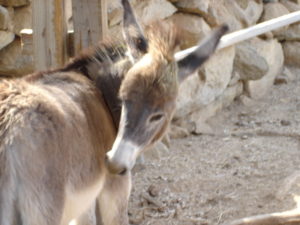“There are three rules to writing fiction. Unfortunately, no one can agree on what they are.”
– Somerset Maugham
We may never agree, but writers can and do argue endlessly about those rules. Prologues seem to be a frequent subject of discussion, and a major concern to beginning writers. What’s the big deal? Do prologues enrich good writing or are they useless appendages, to be cut off whenever they sprout?
First, let’s clarify what a prologue is. Technically speaking, a prologue is a frame, that part of the frame that comes before the action. An epilogue is the frame after the main action.
Practically speaking, prologues most often provide information necessary to the story about events that happen before the story time, and most often, from a different perspective. In mysteries, a prologue may reveal the murder, perhaps in third person when the story is in first person. They may be in the point of view of the villain or the victim. Placing it in the POV of the victim is one way to reveal the death without revealing too much else.
Some authors use the prologue to introduce the protagonist, useful in a series. Martha C. Lawrence used this method in Aquarius Descending.
It’s been said that agents hate prologues, and that readers don’t read them. Elmore Leonard says “Never open with a prologue, because they’re boring. Get into your story as fast as you can.” I’ve found that prologues go in and out of vogue.
What to do, if you have information about pre-story time events that needs to be shared? Some writers avoid the use of the dread word “prologue” by simply calling those introductory pages, “Six Months Before” (Joe Gores in 32 Cadillacs), or as Linda Barnes does in Cold Case, “August.” Chapter One is then titled, August, One Year Later.” Others start in with Chapter One, and provide dates to show when the events occurred.
Prologues are less commonly, and in my opinion, less effectively, used to flash forward to an event that occurs later in the story. Often they’re an excuse for lack of action at the start of a story, sort of an assurance to the reader that something exciting will happen sometime. Perhaps it’s the scene where the body is found. That scene may be repeated verbatim in the body of the story, or appear in a different point of view. Done well, it works. Done poorly, it annoys. An example of the technique done well is in A Wild And Lonely Place by Marcia Muller. The prologue shows protagonist Sharon McCone encountering turbulence as she flies her injured lover to safety. The scene is repeated, verbatim, later in the book. Even there, I’m not certain it was necessary. Readers assume that Sharon McCone will get herself into trouble, sooner or later, in Muller’s novels. And get herself out.
One member of a list serve I’m on said that he likes prologues, that they provide a sense of mystery. Another said if she picks up a book and sees a prologue, she puts the book down again. Another writer reported hearing mystery editor Michael Seidman advise avoiding prologues; another author replied Michael had edited her novel, leaving her prologue intact.
In Plot, a Writer’s Digest Book, Ansen Dibbell advises that “all this structural hanky-panky (referring to epilogues as well as prologues) isn’t something to engage in just for the fun of it. Any departure from linear, sequential storytelling is going to make the story harder to read and call attention to the container rather than the content, the technique rather than the story those techniques should be serving.”
In other words, as the King of Hearts instructed in Alice’s Adventures in Wonderland, “Begin at the beginning and go on till you come to the end: then stop.”
However, if you believe your story can best be told using a prologue, use it. Don’t let worries about “structural hanky panky” stop you from writing the best book that’s in you. Only you know what will work for your book.
A prologue is a tool for an author. Wield it wisely and it will work for you. Use it to prop up a weak story and it may well only serve to spotlight that weakness.
